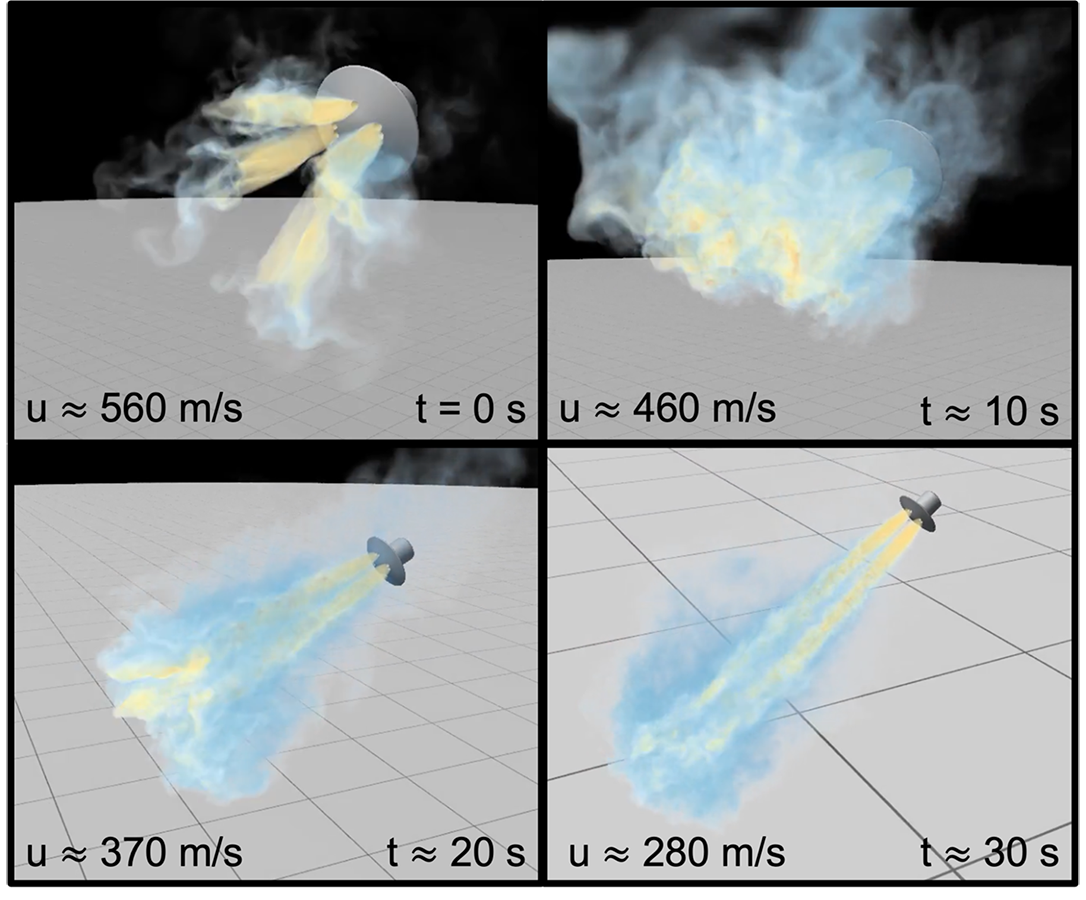Stay Up to Date
Submit your email address to receive the latest industry and Aerospace America news.
The Fluid Dynamics Technical Committee focuses on the behaviors of liquids and gases in motion and how those behaviors can be harnessed in aerospace systems.
At the AIAA Aviation Forum in June, researchers from the Air Force Research Laboratory and Purdue University presented results from an experiment involving a laminar, hypersonic shock/boundary-layer interaction, or SBLI. The test utilized an axisymmetric compression corner model under low-disturbance Mach-6 flow and demonstrated naturally generated turbulent spots due to a shear-layer instability. That instability amplified over the separation bubble present at the compression corner, due to the SBLI, resulting in breakdown into a turbulent spot. This was the first experimental evidence for shear-layer instabilities leading to turbulence under hypersonic quiet flow, which is designed to have freestream disturbance levels like flight environments. Such conditions are challenging to establish since they are typically two orders of magnitude below the freestream noise levels of conventional hypersonic tunnels. Such experiments help improve transition models, allowing engineers to accurately predict heating and controllability of future hypersonic vehicles.
Also at the Aviation Forum, researchers from NASA’s Langley Research Center in Virginia and the Georgia Institute of Technology presented high- fidelity large-scale computational fluid dynamics trajectory simulations of a human-scale Mars lander descending through the Martian atmosphere with retropropulsion. The CFD solver was coupled with a trajectory analysis package, which provided the necessary control inputs to maintain the desired flight path. Simulations were performed via thousands of graphics processing units on the Summit supercomputer at the U.S. Energy Department’s Oak Ridge National Laboratory in Tennessee. Flight times of approximately 30 seconds were simulated over the course of a few days on the Summit via grids containing several billion elements. Such approaches allow flight controller testing and validation for aerospace vehicles in more realistic flight environments modeled by high-fidelity scale-resolving CFD.
In May, researchers at the University of Nevada, Reno pioneered novel techniques for selective adjustment of conservation properties within unsteady fluid flows. With this method, they identified and modified flow structures, altering their kinetic energy while simultaneously preserving the rate of energy dissipation, and vice versa. The approach can stabilize turbulent flows, potentially coaxing them toward steady states and otherwise unstable equilibrium solutions. Through the induction of twist waves within vortical structures, the vorticity and velocity fields present in three-dimensional turbulence can be aligned while leaving the kinetic energy of the flow intact. These techniques could unearth new dynamics in turbulence and enhance aerodynamic performance by disrupting tip vortices.
In August, the Office of Naval Research concluded a three-year study of detailed flow field measurements on the upper surface of a wing flap with its partners, the Air Force Research Laboratory, NASA, the Army Research Labs, Boeing and the University of Notre Dame. This wing flap was representative of a smooth body, where prediction of flow separation for CFD tools has been a challenge. The results, along with geometry definition, were made available to the broader science and engineering community through NASA’s Turbulence Modeling Resource website. Such studies can be referenced when developing next-generation turbulence models and evaluation of emerging physics-based methods.
Under an initiative of the AIAA Reduced-Complexity Modeling and Analysis of Fluids Flows Discussion Group, a team of researchers from eight institutions compiled a database designed to aid in the conception, training, demonstration, evaluation and comparison of reduced-complexity models for fluid mechanics. In May, a description of the database was published in the AIAA Journal, and the database was publicly released. The database contains time-resolved data for six distinct flows spanning a wide range of regimes, including laminar and turbulent, transient and statistically stationary, obtained from experiments and simulations. Broad adoption of this common testbed by the fluid dynamics community would help clarify the distinct capabilities of new and existing reduced-complexity modeling methods.
Contributors: Elizabeth Benitez, Scott Dawson, Abdi Khodadoust, Aditya G. Nair, Gabriel C. Nastac and Aaron Towne
Stay Up to Date
Submit your email address to receive the latest industry and Aerospace America news.




